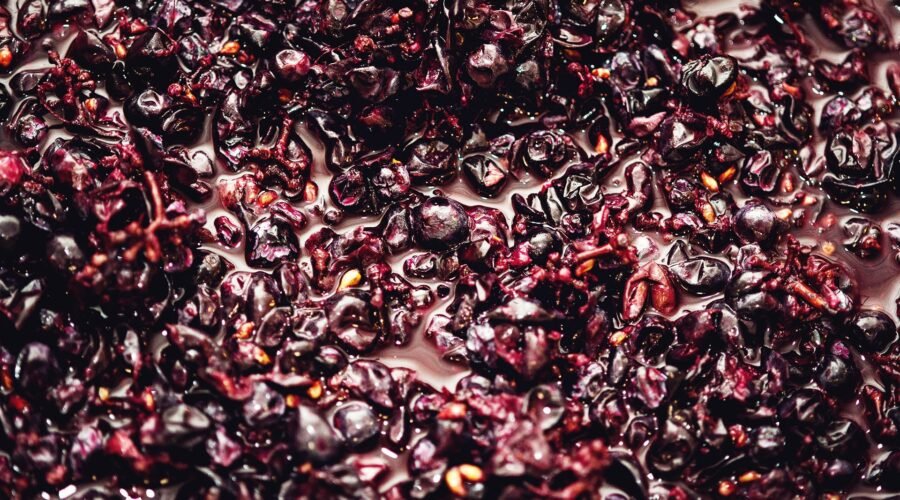Culture: Is Yeast Info on Labels Wine’s Next Great Debate?
Wine is full of nerdy topics, but none might be nerdier than yeast. When winery tours get to the yeast portion, that’s when normal people likely begin to wonder if they’ll ever get to finally taste some wine. “And, of course, all of our wine is spontaneously fermented with wild yeast…,” the winemaker might say, as eyes glaze over. It turns out that yeast, while essential to fermentation, is deeply unsexy to talk about.
However, I’m here to suggest that we should be talking more about yeast. Maybe even a lot more. At the very least, we should talk about what type of yeast is used by wineries during the fermentation process.
I’m not the only one who feels this way. In July, a French lawmaker introduced a bill in the nation’s Legislative Assembly that would require winemakers to label whether a wine is made with commercial yeast. According to the French wine news site Vitisphere, MP Richard Ramos from the center-right Mouvement Démocrate party suggests in the bill that wine has “very little information is on the label” and that while “many French people consume wine daily, the vast majority of them are unaware of its composition.”
According to Wine-Searcher, the bill claims that people are “unaware that many winegrowers add exogenous yeasts to their wine.” By exogenous yeasts, Ramos means commercial (or “cultured,” or “selected”) yeasts, usually manufactured for the wine industry. These commercial yeasts are added to the grape must for more consistent and quicker fermentation.
But around the world, spontaneous fermentation with wild yeast has become a hallmark of low-intervention and natural winemaking. More and more, winemakers eschew commercial yeast and instead allow the grape juice to ferment with native yeasts that exist ambiently in the vineyard, on the grapes and in the winery. Spontaneous fermentation is slower and less predictable, but advocates say it adds discernible complexity to the wine. It’s also the oldest method of making booze known to humans. Since France is miles ahead of other nations in natural winemaking, it makes sense that the issue has reached the level of legislation there.
You May Also Like: The Beginner’s Guide to Natural Wine
Of course, like most things that involve natural wine, there are plenty of strong opinions on both sides. Unsurprisingly, France’s Association of Natural Winemakers called the bill “logical and necessary.” Equally unsurprising, there’s been a ton of opposition to the bill. Vitisphere quoted Patricia Taillandier, a microbiologist and researcher at the Chemical Engineering Laboratory in Toulouse, who called the proposal “totally outlandish.”
“I cannot see how the consumer is being misled,” Taillandier said. “All yeasts are native to grapes, whether they have been selected or not. Not to mention the fact that adding selected yeasts is a very widespread practice. It’s exactly what is done with bread, yogurts and beer, to name a few. Why specifically target wine?” Commercial yeast, after all, was once wild yeast. And there’s no evidence of either native or commercial yeast being healthier.
Others objected to the idea of labeling yeast at the same time the European Union is demanding that wine labels list all ingredients and give nutritional information, either on the label or through a computer QR code. The EU has set a December deadline for the new labeling, after years of producers arguing that wine should remain exempt from the rules and regulations that apply to other food and drinks. According to the English-language French news site The Connexion, how yeast will be labeled is already a point of contention.
“Obviously, all wine comes from grape juice, but if it is fermented with natural yeasts, must you have them on the label or must you only mention a cultured yeast?” asks Sara Briot-Lesage, of the Conseil Interprofessionel du Vin de Bordeaux. “And if it is an old cultured yeast, will it have the same declaration as a new cultured yeast?”
You May Also Like: How to Understand (Almost) Everything on a Wine Label
In the end, it’s a classic case of one side (the low-intervention side) wanting to discuss yeast, while the wineries that rely on commercial yeast would rather not talk about such things. Care to guess why? As a huge generalization, I’m just going to throw out there that most of the wines that I personally prefer are fermented spontaneously with native yeast. So, I am not the most impartial observer of this debate. Still, I have mixed feelings about the idea of labeling commercial versus wild yeast on the bottle.
If talking about yeast seems geeky, so did talking about sulfites not too long ago. Now, lots of people who’ve jumped on the natural-wine bandwagon refuse to touch wines with sulfites. For me, a tiny bit of SO2—just before bottling—is not worth getting cranked up about. But I appreciate that plenty of natural wine people do not share my point of view. They believe in zero-zero, and that means no sulfites. (If you want to see how heated these arguments over sulfites get, read my story on Everyday Drinking about that ends with an angry natural winemaker throwing his dump bucket over me.) The problem is that, too often, the natty wine crowd ends up dismissing well-made wines out of hand based on one single criteria.
I hope that doesn’t happen next with yeast. Though I do welcome a more interesting conversation on the topic in the near future.
You can follow Jason Wilson on Wine Enthusiast and click here to subscribe to his Everyday Drinking newsletter, where you’ll receive regular dispatches on food, travel and culture through the lens of wine and spirits.
Published: August 23, 2023


